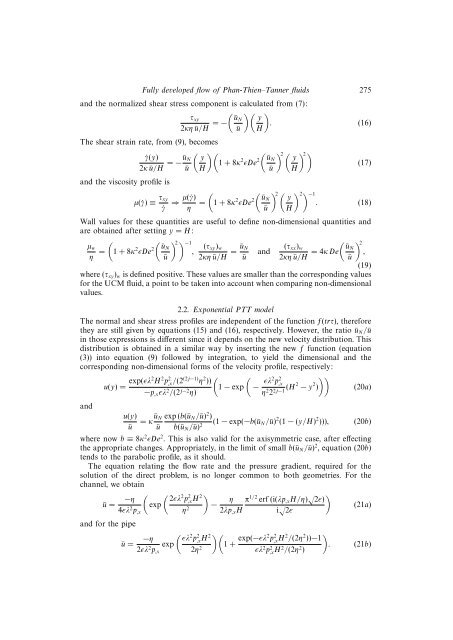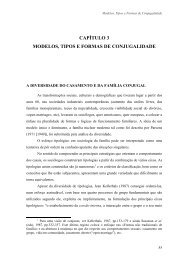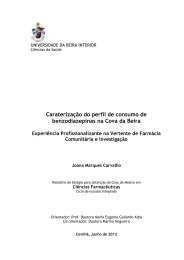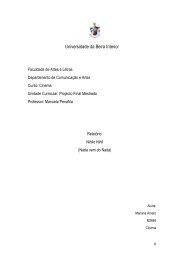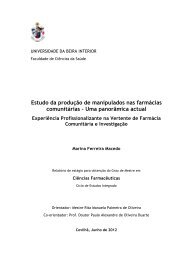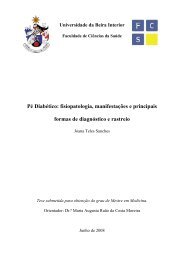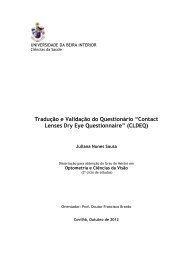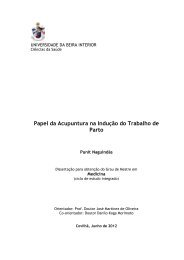Analytical solution for fully developed channel and pipe flow of Phan ...
Analytical solution for fully developed channel and pipe flow of Phan ...
Analytical solution for fully developed channel and pipe flow of Phan ...
- No tags were found...
You also want an ePaper? Increase the reach of your titles
YUMPU automatically turns print PDFs into web optimized ePapers that Google loves.
Fully <strong>developed</strong> <strong>flow</strong> <strong>of</strong> <strong>Phan</strong>-Thien–Tanner fluids 275<strong>and</strong> the normalized shear stress component is calculated from (7):)( )τ xy(ūN y2κη ū/H = − . (16)ū HThe shear strain rate, from (9), becomes˙γ(y)2κ ū/H = −ūN ū<strong>and</strong> the viscosity pr<strong>of</strong>ile isµ(˙γ) ≡ τ xy˙γ⇒ µ(˙γ)η( yH)(1+8κ 2 ɛDe 2 (ūNū=) 2 ( yH) 2 )(17)() 2 ( ) 2 ) −1 (ūN y1+8κ 2 ɛDe 2 . (18)ū HWall values <strong>for</strong> these quantities are useful to define non-dimensional quantities <strong>and</strong>are obtained after setting y = H:) 2 ) −1µ w(ūN(1+8κη = 2 ɛDe 2 (τ xy ) w,ū 2κη ū/H = ūN <strong>and</strong>ū) 2(τ xx ) w(ūN2κη ū/H =4κDe ,ū(19)where (τ xy ) w is defined positive. These values are smaller than the corresponding values<strong>for</strong> the UCM fluid, a point to be taken into account when comparing non-dimensionalvalues.2.2. Exponential PTT modelThe normal <strong>and</strong> shear stress pr<strong>of</strong>iles are independent <strong>of</strong> the function f(trτ), there<strong>for</strong>ethey are still given by equations (15) <strong>and</strong> (16), respectively. However, the ratio ū N /ūin those expressions is different since it depends on the new velocity distribution. Thisdistribution is obtained in a similar way by inserting the new f function (equation(3)) into equation (9) followed by integration, to yield the dimensional <strong>and</strong> thecorresponding non-dimensional <strong>for</strong>ms <strong>of</strong> the velocity pr<strong>of</strong>ile, respectively:<strong>and</strong>u(y) = exp(ɛλ2 H 2 p 2 ,x/(2 (2j−1) η 2 ))−p ,x ɛλ 2 /(2 j−2 η)u(y)ū= κūN ū(1 − exp(− ɛλ2 p 2 ,xη 2 2 2j−1 (H2 − y 2 )))(20a)exp (b(ū N /ū) 2 )b(ū N /ū) 2 (1 − exp(−b(ū N /ū) 2 (1 − (y/H) 2 ))), (20b)where now b ≡ 8κ 2 ɛDe 2 . This is also valid <strong>for</strong> the axisymmetric case, after effectingthe appropriate changes. Appropriately, in the limit <strong>of</strong> small b(ū N /ū) 2 , equation (20b)tends to the parabolic pr<strong>of</strong>ile, as it should.The equation relating the <strong>flow</strong> rate <strong>and</strong> the pressure gradient, required <strong>for</strong> the<strong>solution</strong> <strong>of</strong> the direct problem, is no longer common to both geometries. For the<strong>channel</strong>, we obtain( 2ɛλ 2 p 2 ,xH 2ū =−η (exp4ɛλ 2 p ,xη 2 )−η2λp ,x Hπ 1/2 erf (i(λp ,x H/η) √ )2ɛ)i √ 2ɛ(21a)<strong>and</strong> <strong>for</strong> the <strong>pipe</strong>ū =−η ( ɛλ 2 p 2 ,xH 2 )(exp1+ exp(−ɛλ2 p 2 ,xH 2 /(2η 2 )))−1. (21b)2ɛλ 2 p ,x 2η 2 ɛλ 2 p 2 ,xH 2 /(2η 2 )


